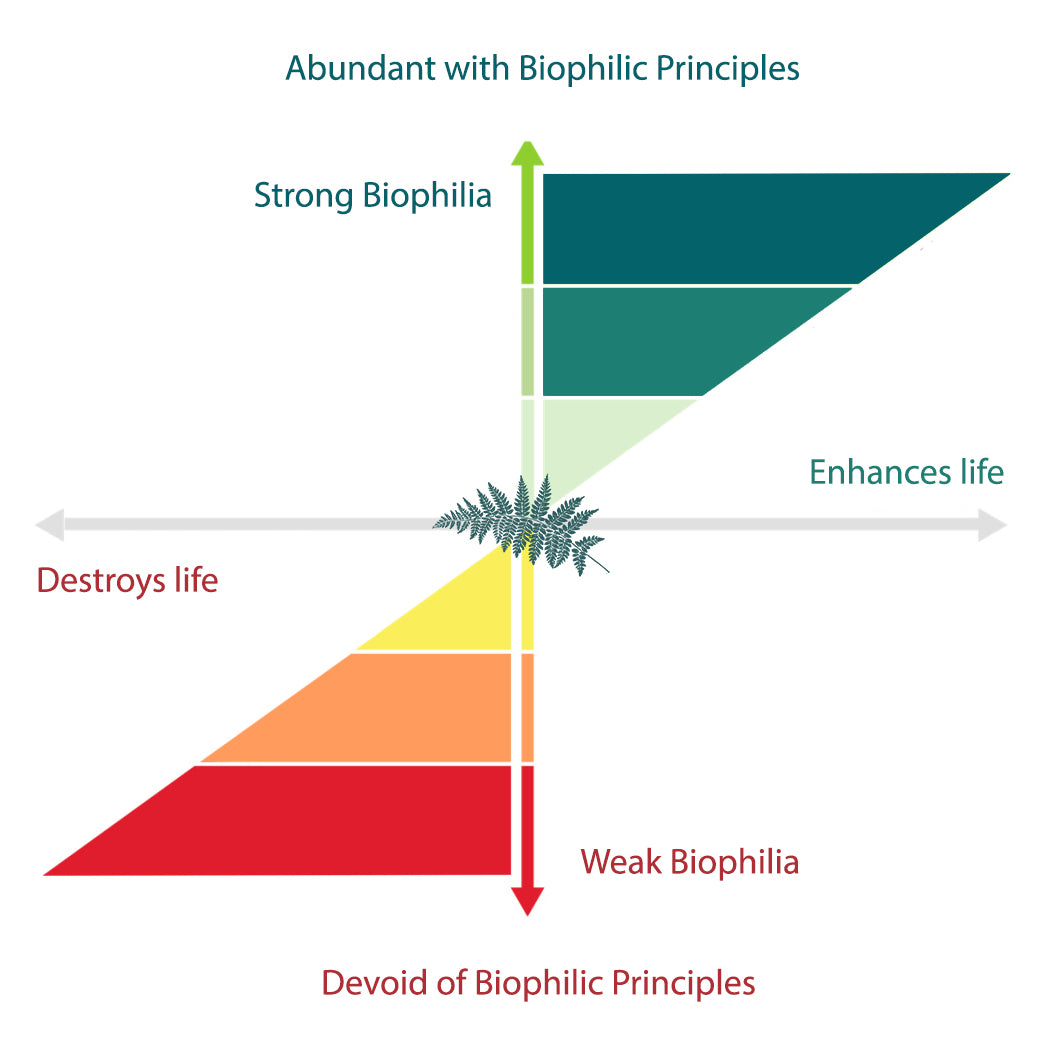Rating the Principles of Biophilic Design and Sustainability
Biophilic design is essential in the built nvironment because it reconnects people with nature which has been proven to improve mental health, enhance creativity, reduce stress, and increase overall well-being. As we are increasingly living inside and in cities, natural experiences become more limited in daily life. Research demonstrates that incorporating natural elements, such as plants, natural light, water features, and organic forms, in our environment can lead to better cognitive function, emotional
resilience, and productivity (Kellert, 2008).
This is what biophilic design and products which are in harmony with the principles of biophilic design aim to do. While Biophilically Design Products inherently tend to be more pleasing to us, this isn't just an aesthetic preference; it's a crucial component for creating healthier spaces where people can thrive.

The materials
The materials we choose for built environments directly influence the success of biophilic design. Natural materials like wood, stone, wool, and clay evoke tactile, visual, and even olfactory connections to nature, which synthetic alternatives often lack.
Studies have shown that the presence of natural materials can significantly reduce blood pressure and heart rates and contribute to a sense of comfort and calm (Fell, 2010).
Likewise,furniture selection matters because it supports the sensory and emotional goals of biophilic spaces. Ergonomically supportive furniture made from natural or sustainably sourced materials promotes physical wellness while maintaining the organic, non-intrusive aesthetic that biophilic design principles encourage.
Measurement
To measure products in terms of biophilic design principles, we evaluate them based on several criteria: the use of natural materials, sensory richness (engaging touch, sight, sound, or smell), environmental sustainability, and their ability to foster a connection to nature or natural processes.
Frameworks like Terrapin Bright Green's "14 Patterns of Biophilic Design" provide a structured approach to assessing whether a product or material supports direct or indirect connections tonature, evokes place-based relationships, or mimics natural patterns andprocesses (Terrapin Bright Green, 2014). Certification systems like WELL Building Standard and Living Building Challenge also provide more formalised metrics for integrating biophilic elements into projects.
We have synthesised the researched outcomes, case studies, Wilson, Kellert, Terrapin and evidence of Biophilic Design principles of many research papers and also 5 years of conversations and discussions with industry to create 10 Biophilic Design rating principles against which we benchmark products. You can download the HERE

The rating system
This Biophilic Design Sourcing Hub is for the design and specification industry ,to help us all consider how and what we buy is having an impact on human health and living systems on our planet. We hope that the Biophilic Design Sourcing Hub will connect everyone together to help accelerate better understanding and create healthy environments that are also beautiful and inspiring for your clients.
